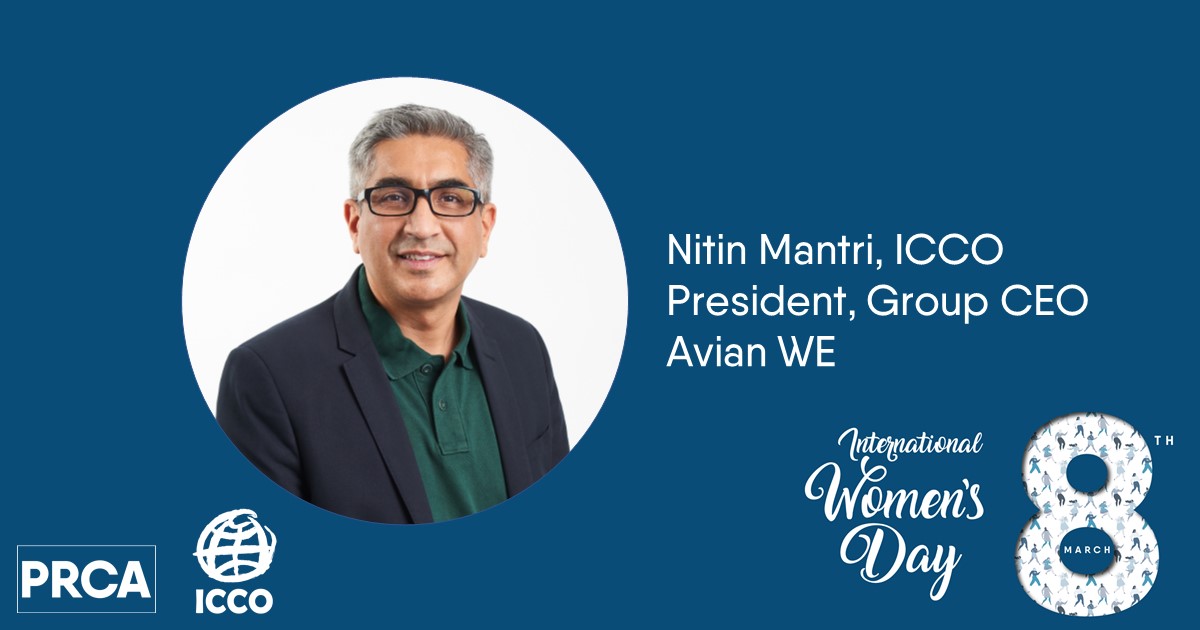Four Ways to elevate women’s voices and make the PR industry a level playing field – Nitin Mantri
Just two years into the new decade and the world has seen an astounding number of breakthroughs in science and technology. Shared knowledge resulted in the fastest development and rollout of the Covid-19 vaccine; WHO approved the world’s first malaria vaccine for children; NASA learned how to fly in a Martian atmosphere, IBM launched the most powerful quantum processor yet, and every company worth its salt jumped on the “metaverse’ bandwagon.
The speed at which new discoveries and advances are helping humankind accelerate into a new world is both exciting and ironic. Because all the progress notwithstanding, when it comes to gender equality, we are abysmally behind. According to the World Economic Forum’s Global Gender Gap Report 2021, the pandemic has increased the global gender gap by a generation – from 99.5 years to 135.6 years.
Gender inequality exists in every industry – from technology to corporate, politics, media, sports, entertainment, and beyond. It is a complex issue and there is no one size fits all solution.
What can we do about this? How can we ensure that the communications industry, where agencies are overwhelmingly staffed by women but often led by men, functions fairly and equitably? Here are four ways we can elevate women’s voices as powerfully, and as often, as we elevate men’s and make our industry a level-playing field:
Gender equality should be a CEO’s top priority
Gender equality must be in the DNA of every communications firm, embedded in its values and culture, and used as a lens for every decision from strategy to recruitment. And it must swoop down from the top leadership. If the CEO and the board of directors are not committed to ensuring a safe and supportive work culture that is conducive for the growth of their women employees, equality will just be a tick box. Change must start at the top of an organisation and the onus to eliminate biases lies on the CEO.
Build a work culture that integrates work and family
Even though we are living in the 21st century, women are still the primary, and at times, the sole caregivers in their families. In the absence of an office structure that integrates work and family, several women are forced to drop out of the workforce every year. We can prevent this by developing policies and programmes that support both women (as mothers and daughters) and men (as fathers and sons). Provide sufficient maternity and paternity leaves; introduce flexible hours for expectant and new parents, give caregiver leave or part-time work opportunities to employees who need to tend to the medical needs of ageing parents or ailing family members. This way the burden of family responsibilities will be equally distributed, and women will find it easier to do their jobs.
Introduce returnee programmes
Invest in returnee programmes to balance the gender gap. Many women are not able to restart their careers after a break because the rapid evolution of technology results in their skillsets being outdated. We can address the industry’s talent problem by helping women reskill and upskill and join back the workforce. VMware, for example, started India’s biggest returnee programme called VMInclusion Taara in 2019 to address the increasing gender gap in the technology sector. Over 12,000 women have registered with the programme in a span of two years and around 2,000 women have found their way back into the workforce.
Measure progress to achieve gender equality
Gender equality policies and programmes will remain only on paper, if we don’t track and measure their implementation and progress. The best way to do it is by tying executive bonuses, including the CEO’s salary, to diversity goals. Companies like Microsoft, Intel, Nike, Facebook and Johnson and Johnson, to name a few have already done that. So, while we counsel our clients on the importance of sustainability and purpose, we also need to put our money where our mouth is and incorporate gender diversity goals in our business strategies. This will hold our leaders accountable for their behavior, help them address their unconscious biases, and build a steady pipeline of senior talent.
#BreakTheBias
It’s critical to remember that gender equality is not for the benefit of women alone. When companies empower their women employees, it has a multiplier effect on businesses, families, communities, and economies. High time we made a conscious effort to #BreakTheBias, and bring about genuine structural changes for gender equality in the communications industry.




